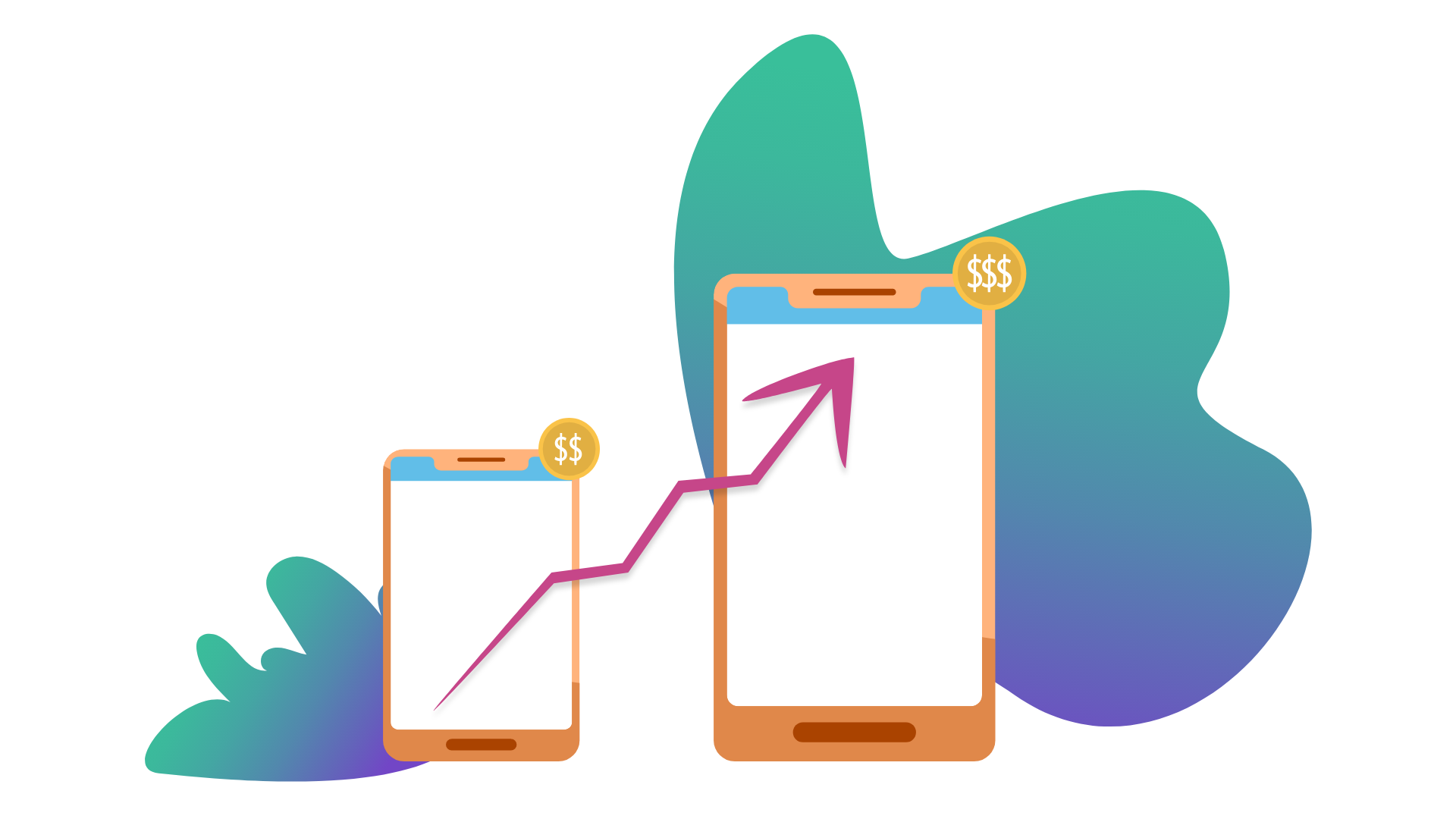
No doubt, upselling is a beneficial sales technique for any business in any industry. It’s all in how you handle it, which will determine whether you reap any benefits or not.
If you want to bring in more revenue and build strong customer relationships, check out the six tips below for a successful upselling approach.
Upselling vs. Cross-Selling
First things first, upselling is not the same as cross-selling. People often confuse the two. Both of them are sales techniques that you can use to increase your revenue.
Upselling
Upselling means encouraging the customer to buy the more expensive version of the product. You offer them a better version of the product or a chance to upgrade it with additional features. In simple terms, you’re saying: buy this instead of that.
Let’s say that a customer is looking at a gaming laptop.
You can suggest another gaming laptop with more powerful graphics than the one they are looking at. You are trying to upsell the customer to a better (and more expensive) version of the laptop.
Cross-selling
Cross-selling means you are offering your customer other items that go along with the product they plan to purchase. In simple terms, you’re saying: buy this in addition to that.
Let’s stick to the same example. A customer has chosen a gaming laptop. You can offer a comfy gaming headset that will let them immerse themselves in the game without any distractions. This is the cross-sell, the headset complements the laptop purchase.
Upselling Tips to Keep in Mind
New customers are less likely to buy compared to existing customers. The probability of selling to an existing customer is 60-70%.
1. Make sure the upsell has value to the customer
Instead of chasing numbers, focus on getting to know your customers better, and connect with them. Knowing what your customers need is more than enough, don’t pressure them to change their minds.
Design the upsell to solve a problem or inconvenience the customer may face. You can do this by personalizing your upsell recommendations based on previous behavior and purchase history.
Don’t make a sale only to make a sale. Let them be in charge and make the final call. Their satisfaction comes first. When you offer upsells relevant to the customer, it’s more likely they’ll go for it.
“Don’t find customers for your products, find products for your customers.”
Seth Godin
2. Don’t push a sale
There is a time and a place to go for an upsell. Annoying pop-ups on every single page will discourage people from buying at all. Think of when it’s the right time to offer an upgrade or a better product. That’s why you’ll see upsell recommendations at the bottom of a specific product page, or when you add an item to the cart.
You need to make sure that your customers have a reason to upgrade. For example, you can send them a friendly reminder, like Dropbox. When you use up all of your storage, they send you an email telling you that you can always upgrade to more space.
At some point or another, we all get this kind of email. You’ll find at least one upselling email in your inbox for sure.
3. Be transparent and honest
When you try to sell your customer a better version of a product, things can get tricky. Because, of course, it’s going to cost more than what they had in mind.
Don’t try to hide that or any other requirement like additional contracts. Explain the value they get in return. Show them that ultimately you are saving them money. Social proof is a great way to show customers why they should go with the upsell.
The upgrade might cost a bit more, but it comes with extra features that will benefit you in the long run. Isn’t that so much better than a product that will have to be replaced soon?
You see where we’re going with this.
If you make sure that the upgraded version of your product is actually a better fit, it will increase the customer’s satisfaction. And next time they are thinking of buying, they’ll come to you first!
4. Limit the options
If there are too many options to choose from, customers can become overwhelmed. They might decide not to buy anything at all.
It’s easier to choose between three gaming laptops instead of ten, right? Offer a couple of options and let them choose which one they want to go with.
5. Follow up and reward
If a customer goes for the upsell, it doesn’t mean that your job is done. Make sure you say thank you or reward people for spending more money than they originally planned.
You can send them a thank you email, give a discount coupon or code for their next purchase, or some free gift. This way, they’ll keep you in mind the next time they need to buy something else.
6. Mix things up
Using both upselling and cross-selling is a good idea. But know when it makes sense to upsell and when to cross-sell. Both techniques help you bring in more revenue, grow, and make your customers happy with their choice. It’s a win-win situation.
With all these tips for successful upselling, remember that you need to make the upsell an easy decision for the customer. Well-timed and relevant upsell offers will leave a good impression with your customers and lay the foundation for long-lasting relationships.
